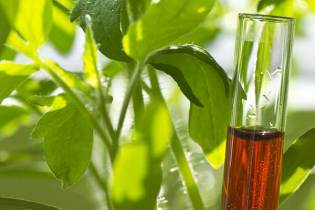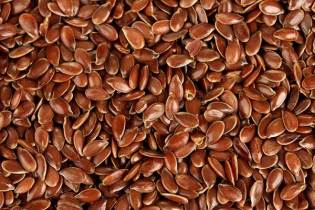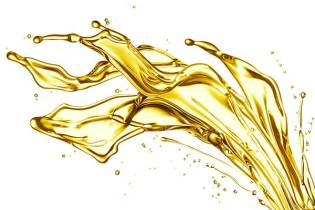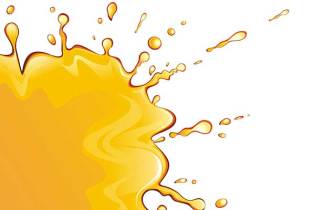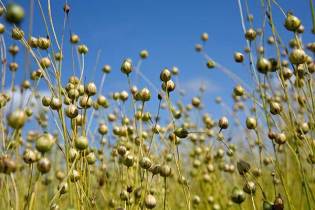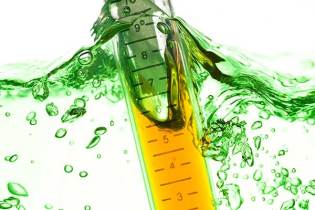Raw materials
Overview
Castor oil
- Standoil
- Polymerised
- Dehydrated
- Hydrogenated
Linseed oil
- Standoil
- Boiled
- Double Boiled
- Alkali refined
- Oxydised
- Emulsifiable
- Raw
Rapeseed oil
- Standoil
- Alkali refined
- Oxydised
- Emulsifiable
Soybean oil
- Standoil
- Alkali refined
- Oxydised
- Emulsifiable
- Lecithin
Dryers
- Barium
- Calcium
- Cobalt
- Cobalt neodececanoate
- Copper
- Manganese
- Potassium
- Strontium
- Zinc
- Zirconium
- Various mix dryers
- Cobalt alternatives
Click on the header for the technical specs.
Technical specs
Natural oils
Castor oil
Technical specs
Technical specs
Technical specs
Technical specs
Linseed oil
- Standoil
- Boiled linseed oil
- Double boiled linseed oil
- Alkali refined linseed oil
- Oxydised linseed oil
- Emulsifiable linseed oil
- Raw linseed oil
| Type: | Linseed standoil is a polymerised and refined linseed oil. |
| Characteristics: | Linseed standoil is like all other linseed oils a yellowing oil. This is caused by the high percentage of unsaturated compounds in linseed oil. Linseed standoil can be brought to any viscosity you wish for. Special viscosities can be produced on demand. |
| Application: | Linseed standoil can be mixed with alkyd resin in order to get more elastic and better glossy paints. It is very suitable for “greasing” coloured paint systems. It is also often used as an addition to the production of butyl cements and as an oil component for staining systems. |
| Processing: | Adding as needed to your extant recipes. |
| Type: | Pale boiled linseed oil is a processed pure raw linseed oil. The oil is slightly oxidised and polymerised during the processing and therefore quick drying. |
| Characteristics: | Pale boiled linseed oil is clear and brown/yellow of colour. Pale boiled linseed oil is a very fast drying oil. |
| Application: | Because of the drying characteristics, excellently suitable for manufacturing paint and/or cement or for “greasing” of stain. The pale boiled linseed oil is pre-eminently suitable as a wood preservative and as an agent to protect iron from rust. For the latter mentioned application it is even recommendable to treat metal that is already somewhat rusty. |
| Processing: | Adding as needed to your extant recipes. If it is used as a wood preservative or antirust-agent to be applied lavishly with a brush. |
| Type: | Double boiled linseed oil is a processed pure raw linseed oil. The oil is slightly oxidised and polymerised during the processing and therefore quick drying. |
| Characteristics: | Double boiled linseed oil is clear and brown/yellow of colour. Double boiled linseed oil is a very fast drying oil. |
| Application: | Because of the drying characteristics, excellently suitable for manufacturing paint and/or cement or for “greasing” of stain. The double boiled linseed oil is pre-eminently suitable as a wood preservative and as an agent to protect iron from rust. For the latter mentioned application it is even recommendable to treat metal that is already somewhat rusty. |
| Processing: | Adding as needed to your extant recipes. If it is used as a wood preservative or antirust-agent to be applied lavishly with a brush. |
| Type: | Alkali refined linseed oil is made by mixing raw linseed oil with the natural product bleaching clay and then heating them. Bleaching clay is a fossile kaoline clay (montmorillonnite) which structure is very porous, by which mucilage and colouring matters are absorbed from the raw linseed oil into the bleaching clay. The linseed oil/ bleaching clay is filtered and a fine clear linseed oil is left, which has a very bright colour. |
| Characteristics: | Alkali refined linseed oil has a tendency to yellow in white and pastel-coloured paints. This is caused by a high value of unsaturated compounds in linseed oil. |
| Application: | The high purity of alkali refined linseed oil makes it a very much wanted product by artists and also a highly valued raw material for the manufacturing of alkyd resin. It is also used in the chemical and pharmaceutical industries. |
| Processing: | Adding as needed to your extant recipes. |
Technical specs
Technical specs
Technical specs
Rapeseed oil
Technical specs
Technical specs
Technical specs
Technical specs
Soybean oil
Technical specs
Technical specs
Technical specs
Technical specs
Technical specs
Other oils
Technical specs
Technical specs
Miscellaneous
Technical specs
Technical specs
Technical specs
Technical specs
Driers – Single metals
Calcium is one of the most important auxiliary drier. It has little drying action in itself but is very useful in combination with active driers. Calcium has strong surface active properties; hence it is very effective as a dispersing agent. It also helps to certain extent as an anti-adsorption agent to prevent loss of drier on storage. In vehicles that show poor tolerance for lead, it is possible to replace part of the lead with a larger amount use of calcium to prevent precipitation haziness or turbidity of lead phthalate observed in compositions containing dibasic acids, like phthalic anhydride. Excess use of calcium should be normally avoided as it can affect the rheological properties due to its surface activity and possibility of incorporation of more quantity of the acidic radical. Calcium Improves hardness and gloss, as well as reduces skinning and silking.
Cobalt is one of the most efficient highly potent and effective drier per unit of metal known today. It is primarily an oxidation and as such acts as a ‘Surface’ or ‘Top Drier: Cobalt provides fastest surface drying properties and is required to be used in small quantities. Used alone, it may have a tendency to cause surface wrinkling and poor through – dry. Therefore, to provide uniform drying, cobalt is generally used in combination with other metals, such as manganese, zirconium, lead, calcium and combinations of these metals. Excess use of cobalt may result in premature skin formation. This can prevent further passage of oxygen and then reduce the efficiency of drying, ultimately resulting in formation of soft films.
Technical specs
Technical specs
Manganese is also an active drier, though generally less active than cobalt. As an accelerator of polymerization in banking finishes, it is usually more effective than cobalt. Manganese gives better low temperature drying performance than cobalt, and films containing manganese do not suffer from wrinkling under high – humidity conditions. It is generally preferred to formulate white enamels with no manganese or from low manganese content; a pink or pink- yellow colour develops of high – manganese contents are used. Manganese has anti-bloom properties and gives hard, water resistant films. Manganese drier activity seems less sensitive to temperature changes than does cobalt. Manganese also has the advantage that it does not cause baked films to embrittle. Additionally, in systems prone to skinning, such as urethane oils, manganese cab be used with good results. Excess use of manganese leads to premature breakdown of the films and discolour the paint film.
Technical specs
Technical specs
Through an auxiliary drier, zinc has negative catalytic activity. Zinc basically keeps the films open by controlling the activity of cobalt. It thus helps uniforms drying and results in hard films. It also eliminates wrinkling in air drying systems and frosting and gas checking in stoving finished. It also eliminates discolouration caused by complexing of other metal driers and helps to stabilize lead, promote film hardness and improve gloss and colour retention of enamels. Zinc is a powerful wetting and dispersing agent, and when incorporated early in the formulation, it greatly reduces the time of mixing and grinding. The amount of zinc required for mono-molecular coverage varies with different pigments ranging from 1.0 to 1.5 percent for blacks, blues, reds and approx. 0.5 percent of the remaining pigments.
Zirconium is an important through drier, most widely accepted as replacement for lead drier. Zirconium improves through drying mainly by the formation of co-ordination bonds. Zirconium drier does not undergo any noticeable change even in the presence of strong oxidising catalyst and does not readily precipitate and disrupt gloss. Zirconium shows less tendency to yellow and better durability compared to other auxiliary driers. It often results in more flexible films than lead drier. Zirconium drier does not destroy the luster of aluminum pigmentation, nor does it sulfide stain. It is used mainly with cobalt and calcium: Generally one third unit of the quantity of Zirconium would replace one unit of lead based on metal. The pigment wetting and dispersing property of Zirconium is relatively less than lead drier.
Various mix driers
Technical specs
FAQ
ADDITIONAL LEVEL OF DRIERS BASED ON RESIGN SOLIDS:
| Cobalt |
0.06% |
to |
0.20% | |||
| Lead |
0.50% |
to |
1.00% | |||
| Calcium |
0.20% |
to |
0.40% | |||
| Zirconium |
0.10% |
to |
0.50% | |||
| Barium |
0.10% |
to |
0.50% | |||
| Manganese |
0.20% |
to |
0.30% | |||
| Zinc |
0.10% |
to |
0.50% | |||
| Iron |
0.20% |
to |
0.50% | |||
| Lithium |
0.30% |
to |
0.50% |
CALCIUM OF DRIERS:
| Wt. of drier required = Resin solids X | % Metal required X Wt. Resin in Paints X 10 | ||||
|
Per Kg of Paint |
100 |
% Metal in drier | |||
FACTORS AFFECTING DRYING TIME:
- Very fine particle sized pigments may absorb driers out of the systems leading to extended drying
- Excess Anti- Skinning agent will increase the drying time
- Presence of water in system will increase the drying time.
- Driers need time to mature in the systems so initial drying will be different to those obtained after storage.
- High humidity tends to slow the drying time.
- High air movements & higher temperature reduce the drying time.
- Different test methods will give different results viz. Touch dry & tack free, BK drying time, Other methods
STAGE OF ADDITION:
- Unless being used as dispersing agent driers should be added at the end of the manufacturing Process & preferably after the paints has cooled to ambient temperature.
- Addition of the Cobalt drier or combination driers containing Cobalt to the paint at high tempera ture could cause discoloration or gellation. This also applies to manganese drier.
- Ensure that the driers are completely incorporated into the paint. There should be no left over drier in the weighing vessel.
- Do not pre mix driers & anti-skinning agent prior to addition to the paint.


